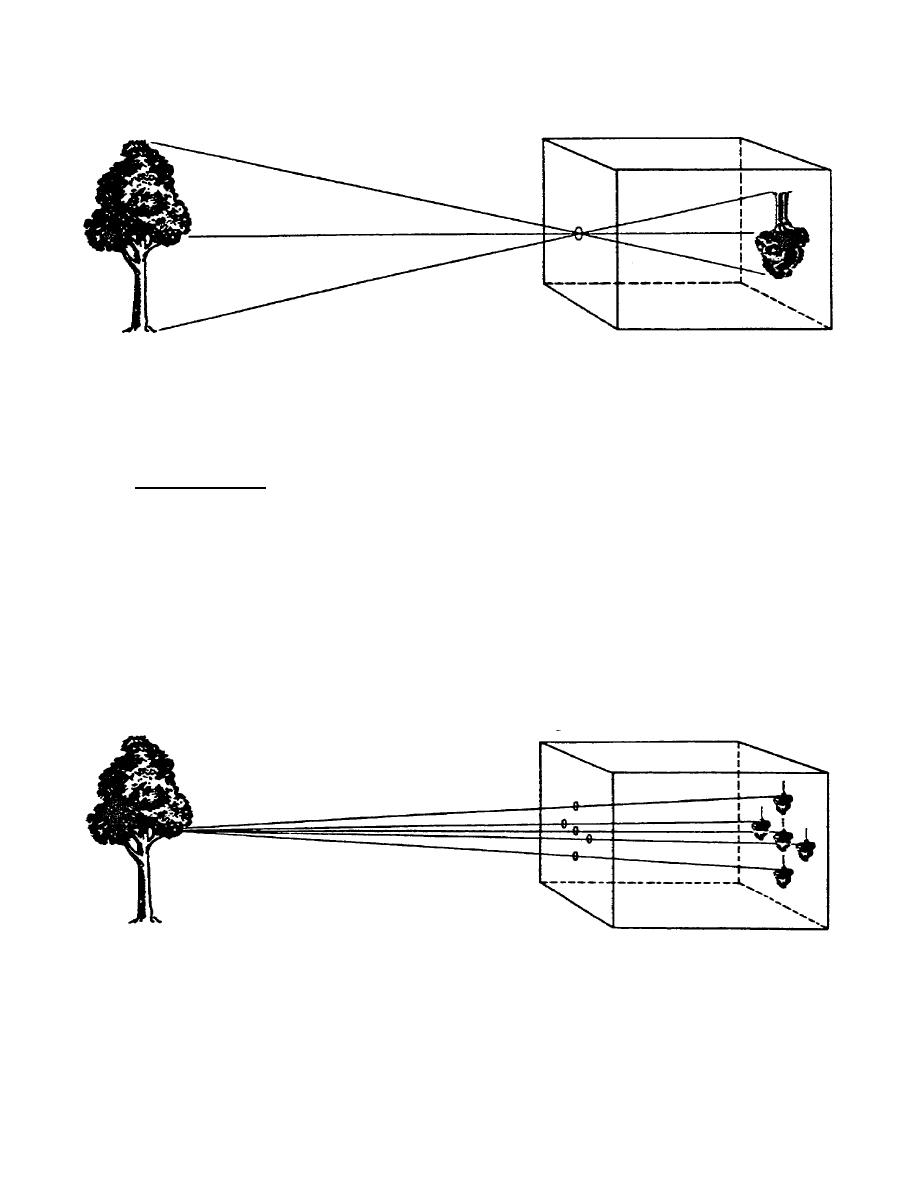
If the pinhole is made larger, (fig 2-2), more light passes through the opening
and the image becomes blurred because of the overlapping of several images.
Figure 2-2.
Image produced by large pinhole.
The images produced by light passing through a small pinhole are sharper than
those passing through a large pinhole.
No pinhole, however, is capable of
producing a critically sharp image.
Because of this, and other limiting
factors, pinhole lenses are not practical for general photography.
2-4. CAMERA LENSES.
A camera lens is a piece of polished spherical and
symmetrical glass that refracts light rays so that an image of a desired scene
is projected on the rear wall of a camera. A lens transmits more light than a
pinhole, and it increases the brightness and improves the sharpness of the
image. The basic principle of a lens any lens - is relatively simple.
a. First, consider an image formed with a single pinhole. Next, consider
another pinhole above the first. This pinhole forms a second image. If these
two images could be made to coincide, the result would be an image twice as
bright as the original.
b. Now, consider a third pinhole on the side of the first, a fourth on
the other side, and a fifth below the first.
All four pinholes project
separate images, slightly removed from the first or center one (fig 2-3).
Figure 2-3.
Separate images of the same object.
83



 Previous Page
Previous Page
